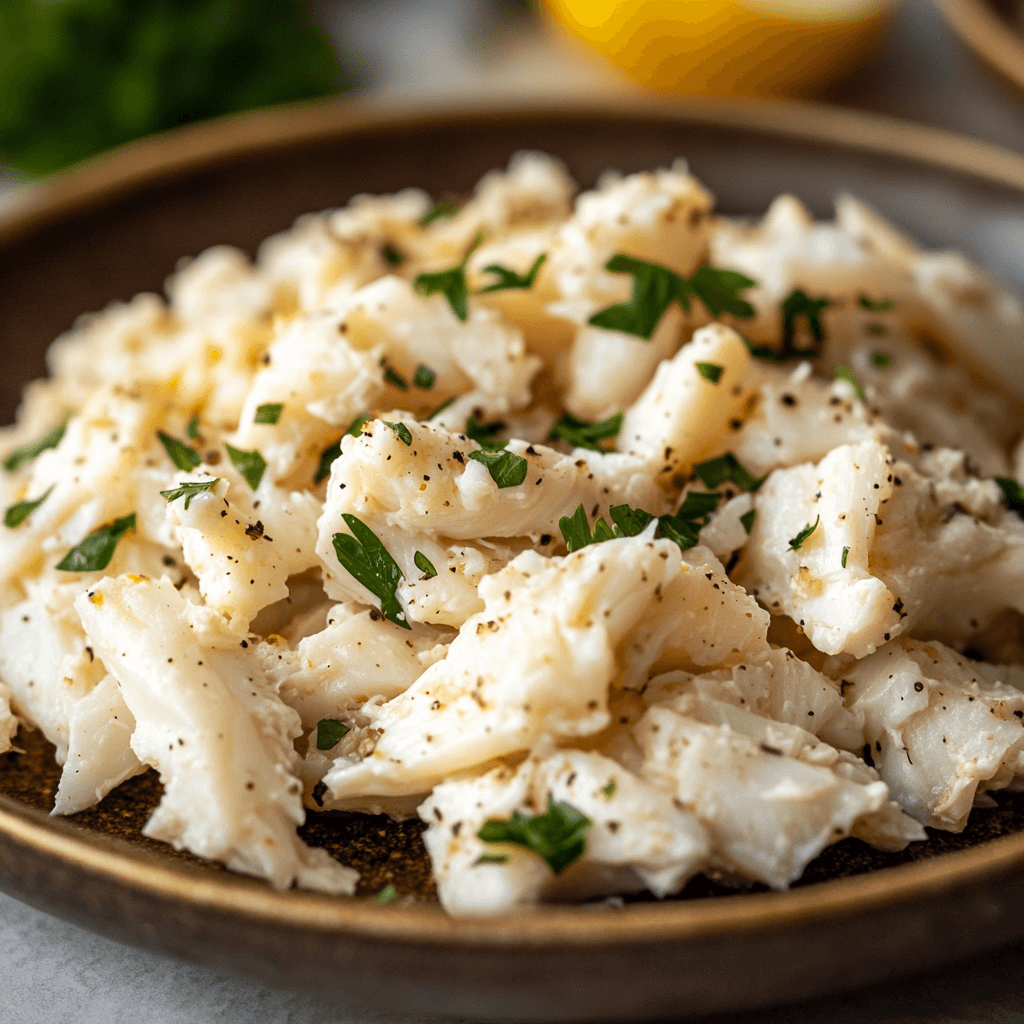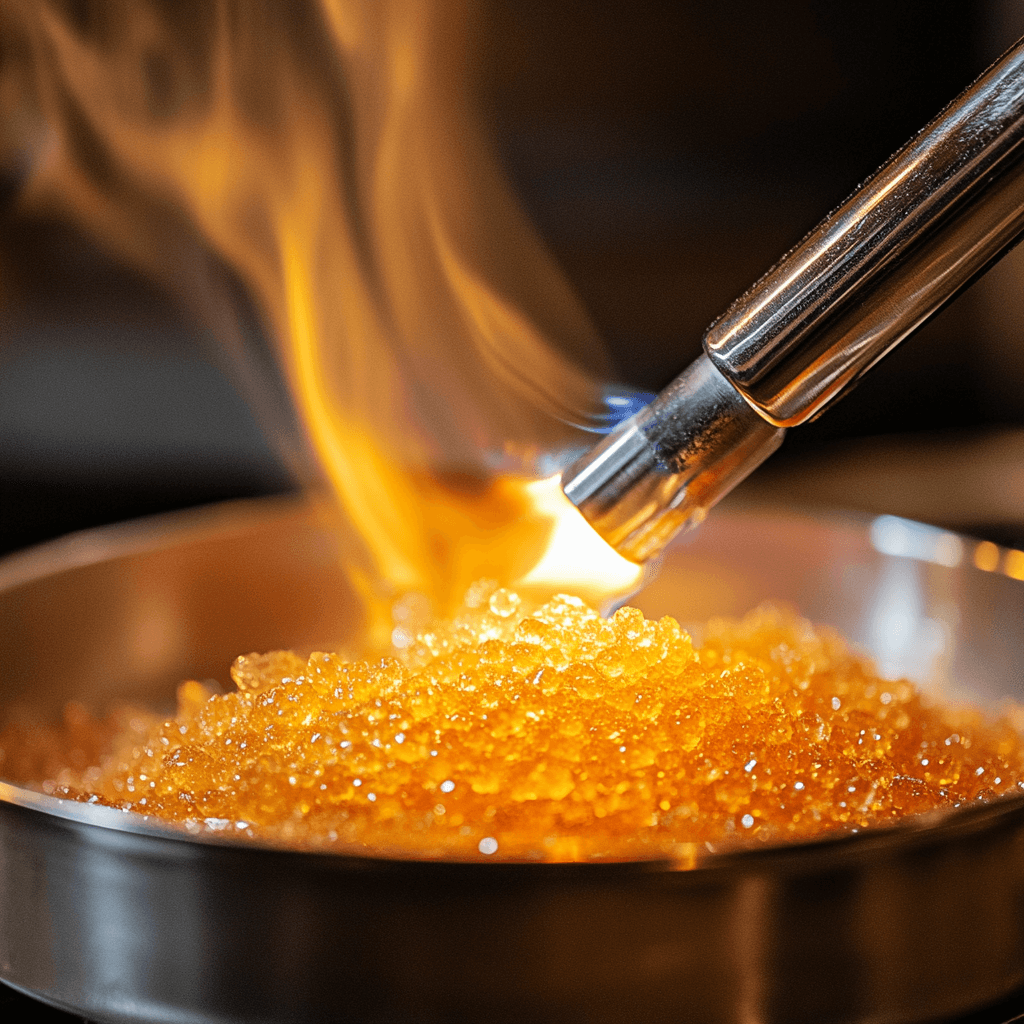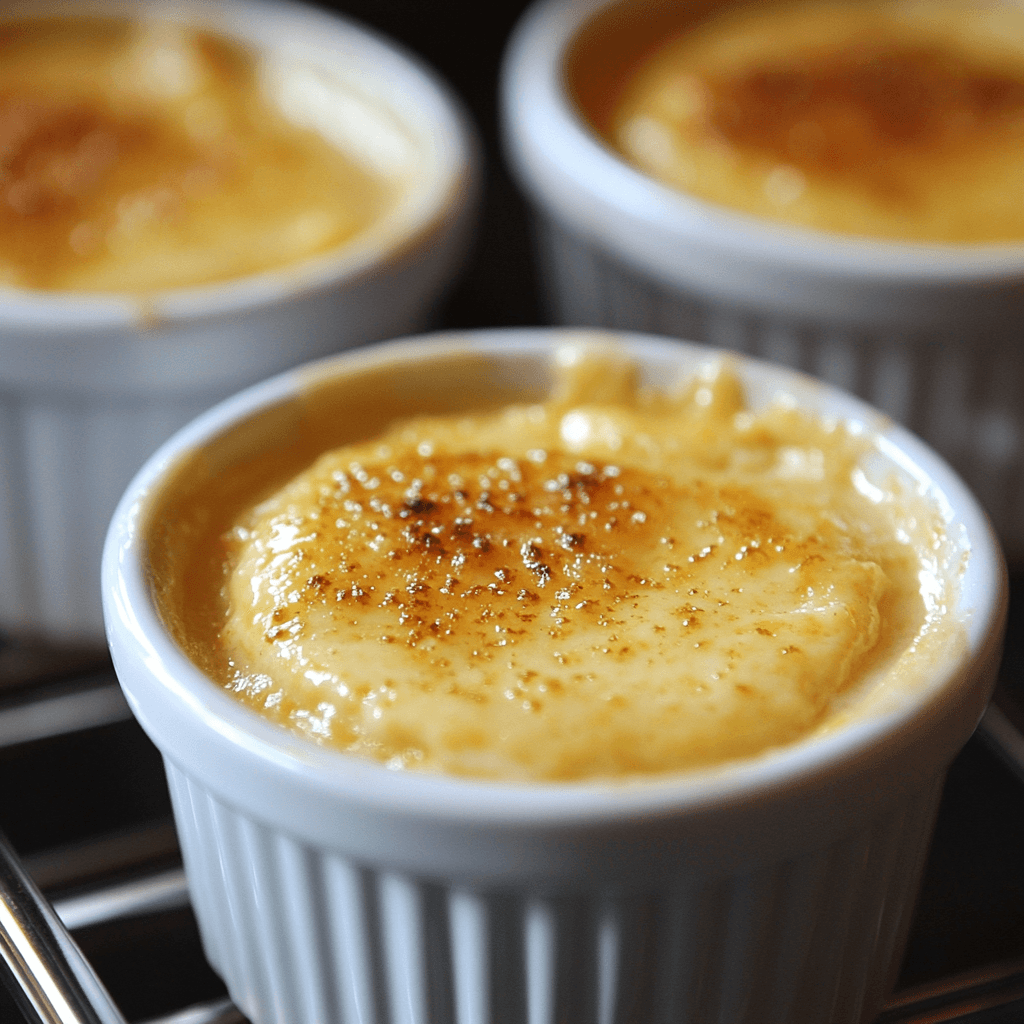Crab Brûlée Recipe – A Luxurious Twist on Classic Crème Brûlée
Crab Brûlée is a deliciously unique dish that combines the rich flavors of crab with the classic French dessert technique of crème brûlée. Perfect for a special occasion, this savory twist on the beloved dessert is sure to impress your guests. Follow this recipe to create the perfect Crab Brûlée at home, with step-by-step instructions and tips for success.
Ingredients for Crab Brûlée
- 1 pound of fresh crab meat (preferably lump crab)
- 1/2 cup heavy cream
- 1/4 cup whole milk
- 3 large egg yolks
- 1 tablespoon Dijon mustard
- 1/2 teaspoon Old Bay seasoning (optional for added flavor)
- Salt and pepper to taste
- 1 tablespoon butter
- 2 teaspoons finely chopped fresh chives (for garnish)
- 1 tablespoon brown sugar (for the brûlée topping)

How to Make Crab Brûlée
Step 1: Preparing the Crab Meat
Before you start, make sure your crab meat is properly prepared. If you’re using fresh crab, pick through it to ensure there are no shells or cartilage. Set aside.
Pro Tip: If you’re using canned crab meat, be sure to drain it well and pat it dry with paper towels to remove excess moisture.
Step 2: Cooking the Crab Base
In a medium saucepan, heat the butter over medium heat. Once melted, add the heavy cream and milk. Stir continuously until the mixture begins to heat up but doesn’t boil.
In a separate bowl, whisk together the egg yolks, Dijon mustard, Old Bay seasoning, and a pinch of salt and pepper. Slowly pour a small amount of the hot cream mixture into the egg yolks to temper them, stirring constantly to avoid scrambling the eggs. Gradually add the rest of the cream mixture while continuing to whisk.
Once combined, return the mixture to the saucepan over low heat. Cook for 2-3 minutes, stirring constantly until it thickens to a custard-like consistency.
Step 3: Incorporating the Crab Meat
Add the fresh crab meat into the custard mixture. Stir gently to combine, ensuring the crab is evenly coated in the creamy custard. Adjust seasoning with salt and pepper to taste. Pour the mixture into individual ramekins or a single baking dish.
Step 4: Baking the Crab Brûlée
Preheat your oven to 325°F (165°C). Place the ramekins in a baking dish and fill the baking dish with hot water halfway up the sides of the ramekins. This creates a water bath that will ensure your Crab Brûlée cooks evenly and doesn’t curdle.
Bake for 25-30 minutes or until the custard is set but still slightly wobbly in the center. Once done, remove from the oven and let cool for 10 minutes before transferring to the refrigerator to chill for at least 2 hours.

Step 5: Creating the Brûlée Topping
Before serving, sprinkle a thin, even layer of brown sugar over the top of each ramekin. Use a kitchen torch to melt and caramelize the sugar until it forms a golden, crispy topping.
Pro Tip: If you don’t have a kitchen torch, you can place the ramekins under the broiler for 2-3 minutes, but be sure to watch closely to avoid burning.
Step 6: Garnish and Serve
Once the sugar topping is golden and crispy, garnish each Crab Brûlée with finely chopped chives. Serve immediately and enjoy this savory, luxurious dish!

Tips for Perfect Crab Brûlée
- Crab Meat: Fresh crab meat is ideal for this dish, but if it’s not available, high-quality canned crab can be a good substitute.
- Flavor Variations: You can adjust the seasoning to your preference. Add a dash of hot sauce, smoked paprika, or fresh herbs like tarragon or parsley for a unique twist.
- Make Ahead: Crab Brûlée can be made a day in advance. Just be sure to cover it tightly with plastic wrap before refrigerating.
FAQ – Frequently Asked Questions
What type of crab is best for Crab Brûlée?
The best crab for this recipe is lump crab meat because of its sweet and tender texture. If lump crab is not available, you can also use claw meat or imitation crab, although the flavor won’t be as rich.
Can I make Crab Brûlée without a kitchen torch?
Yes, if you don’t have a kitchen torch, you can use the broiler in your oven. Place the ramekins under the broiler for 2-3 minutes, but keep a close eye on them to avoid burning the sugar.
How long does Crab Brûlée last in the fridge?
Crab Brûlée can be stored in the fridge for up to 2 days. Make sure to cover the ramekins tightly with plastic wrap to keep them fresh.
Can I make Crab Brûlée ahead of time?
Absolutely! Crab Brûlée is a great make-ahead dish. Simply follow the recipe through Step 4, then refrigerate the ramekins until you’re ready to create the brûlée topping and serve.
External and Internal Linking
External Links:
- The History of Crème Brûlée – Learn more about the fascinating history behind crème brûlée and its French origins.
- Nutritional Benefits of Crab – Discover the health benefits of crab, including its rich source of vitamins and minerals.
- How to Use a Kitchen Torch for Cooking – Get tips on using a kitchen torch for perfecting your brûlée topping.
Internal Links:
- Discover more gourmet recipes: Crab Cakes with Remoulade Sauce Recipe
- Looking for side dishes to pair with Crab Brûlée? Garlic Roasted Asparagus Recipe
- Need more dessert inspiration? Classic Vanilla Crème Brûlée Recipe
- The Best Butter Pecan Pound Cake Recipe: Moist, Rich, and Perfect for Any Occasion
- Chocolate Lava Cake: A Delicious Guide to Mastering This Decadent Dessert
- https://aleidarecipes.com/crab-brulee-recipe
- Print

Crab Brûlée Recipe: A Luxurious Twist on a Classic Dessert
- Total Time: 45 minutes
- Yield: 4 servings 1x
- Diet: Gluten Free
Description
A close-up of Crab Brûlée, featuring a golden caramelized sugar topping and garnished with fresh chives, perfect for impressing guests at your next dinner.
Ingredients
Scale- 1 pound of fresh crab meat (preferably lump crab)
- 1/2 cup heavy cream
- 1/4 cup whole milk
- 3 large egg yolks
- 1 tablespoon Dijon mustard
- 1/2 teaspoon Old Bay seasoning (optional for added flavor)
- Salt and pepper to taste
- 1 tablespoon butter
- 2 teaspoons finely chopped fresh chives (for garnish)
- 1 tablespoon brown sugar (for the brûlée topping)
Instructions
- Prepare the Crab Meat: If using fresh crab, pick through it to remove shells or cartilage. Set the crab aside. For canned crab, drain it well and pat dry with paper towels to remove excess moisture.
- Cook the Crab Base: In a medium saucepan, melt butter over medium heat. Add heavy cream and milk, stirring until the mixture is heated through but not boiling.
- Temper the Egg Yolks: In a separate bowl, whisk the egg yolks, Dijon mustard, Old Bay seasoning (optional), and a pinch of salt and pepper. Gradually add a little hot cream mixture into the yolks to temper them. Stir constantly to prevent scrambling. Once combined, slowly pour in the remaining cream mixture, continuing to whisk.
- Combine the Crab: Pour the custard mixture back into the saucepan and cook over low heat for 2-3 minutes, stirring constantly until thickened. Add the crab meat to the custard and gently mix to combine. Season with salt and pepper to taste.
- Prepare the Ramekins: Pour the crab custard into individual ramekins or a single baking dish.
- Bake: Preheat the oven to 325°F (165°C). Place the ramekins in a baking dish and fill the baking dish with hot water halfway up the sides of the ramekins to create a water bath. Bake for 25-30 minutes or until the custard is set but still slightly wobbly in the center. Remove from the oven and cool for 10 minutes. Transfer to the fridge and chill for at least 2 hours.
- Brûlée Topping: Before serving, sprinkle a thin layer of brown sugar on top of each ramekin. Use a kitchen torch to caramelize the sugar until it forms a golden, crispy layer. Alternatively, place the ramekins under the broiler for 2-3 minutes, but watch closely to avoid burning.
- Garnish and Serve: Garnish with freshly chopped chives. Serve immediately and enjoy!
Notes
- Crab Meat: Fresh lump crab is ideal for this recipe, but canned crab meat can be used in a pinch. Just make sure it’s drained and well-dried.
- Make Ahead: Crab Brûlée can be made a day ahead. Simply prepare through step 6 and refrigerate. When ready to serve, add the sugar topping and brûlée it just before eating.
- Flavor Variations: Feel free to add other spices or herbs like smoked paprika, garlic powder, or fresh tarragon to customize the flavor of the custard.
- Prep Time: 15 minutes
- Cook Time: 30 minutes
- Category: Dessert
- Method: Baking
- Cuisine: frensh americain
Nutrition
- Calories: 280kcal
- Sugar: 2g
- Sodium: 330mg
- Fat: 18g
- Saturated Fat: 9g
- Carbohydrates: 5g
- Fiber: 0g
- Protein: 21g
- Cholesterol: 275mg
Keywords: Crab Brûlée, Savory Brûlée, Crab Recipes, French Recipes, Crème Brûlée twist, Crab Appetizer, Gourmet Crab Dish, Savory Desserts

